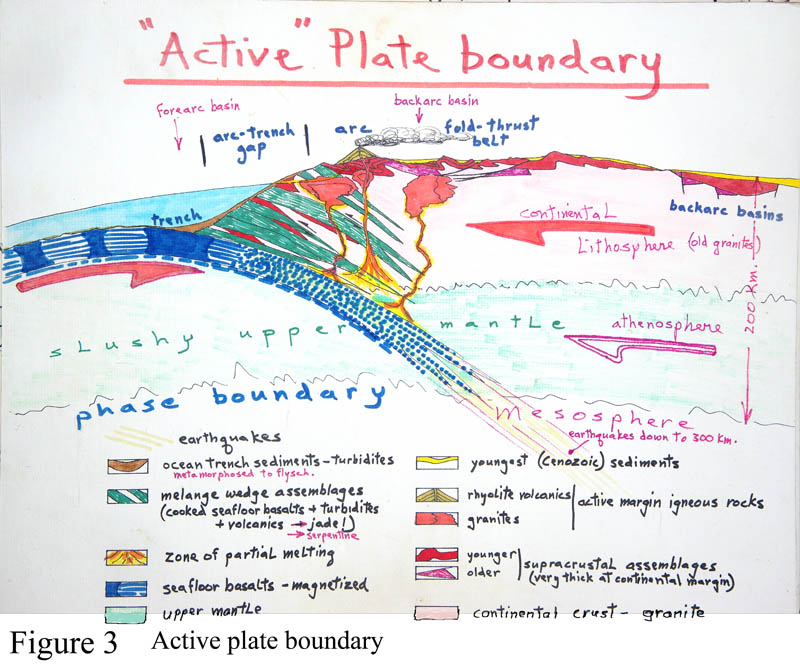An Active Plate Boundary. Shows the complexity of a subduction zone, where a continent collides with an ocean basin. Great example - the Andes of South America colliding with the Pacific Ocean, or the European Alps pushed up by Africa colliding. Such a zone sits off the east coast of Japan where mighty earthquakes bring down nuclear power plants. The green-colored deeper zone on the figure labeled the 'asthenosphere' is like a jelly layer in a thick jelly sandwich, held between your flat palms of your hands - as you pull your hands sideways along each other, the bread comes along nicely but the gooey jelly deforms. And that is how a continent can easily drift over the mantle. Then you eat the model. Rates of head-on collision are some 1-4 inches per year. Then, as the ocean crust layer is shoved down under, the interface with the continent gets very hot with friction at depth and new magmas are melted which then rise as mushroom masses (the bright orange blobs). This is the formation of magmas which can do two things - they may erupt at the surface as volcanoes, or big blobby masses may cool underground to form rocks like granite. This figure is a model for the formation of the Cascade volcano chain in the Northwest. During collision a chain of coastal mountains are made, always with active volcanoes. So along a coastline like the Atlantic shores of Africa or the eastern US where there are no tall mountains or volcanoes, there is no subduction taking place.
We measure big-time earthquakes along the buried subduction zones. A magnitude 9 quake occurred deep offshore of Chile a few decades ago.
There is a very deep offshore trench - the actual line of collision - wherever subduction takes place, with water depths of 20,000 to 35,000 ft. The deepest trench anywhere is called the Marianas, part of the trench system SE of Japan. That deepest spot in the trench was visited by the Piccards in ~ 1959 in their special bathysphere called Trieste, where they found fish, crinoids and other assorted life forms, living happily in the ink-black and chilly bottom waters (reported in National Geographic magazine). My friend James V. Gardner just borrowed a high-tech military sonar from the navy to search the trench for deeper places. Results not yet in.
